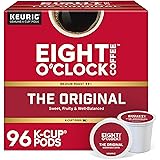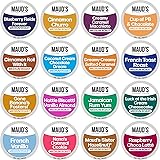Discovering Your Ideal Coffee Brewing Method: A Comprehensive Guide
The vast world of coffee brewing can often feel overwhelming. Many individuals find themselves confused by the sheer number of options available. Selecting the right approach for your daily cup becomes a significant challenge. Fortunately, understanding the distinct characteristics of each popular method simplifies this decision.
As explored in the accompanying video, numerous popular **coffee brewing methods** exist. Each offers unique advantages and disadvantages. This guide provides an in-depth look at these systems. You will learn which method aligns best with your preferences. A perfect cup of coffee is readily achievable at home.
Navigating the World of Coffee Brewers
Modern coffee culture presents a wide array of choices. From manual techniques to automated machines, a brewing device exists for every taste. The goal is often a superior flavor profile. Personal preferences for convenience, cost, and control also play key roles. Your journey to better coffee begins with knowledge of these **coffee brewing methods**.
Pour-Over: Precision and Ritual
A pour-over method involves pouring hot water over coffee grounds. These grounds are placed in a filter within a cone. Water then funnels through into a decanter. This technique allows for significant control over the brewing process.
Variations and Characteristics
Several types of pour-over brewers are prominent. The Hario V60 is a common choice. Other popular options include the Kalita Wave and the Bee House brewer. The Chemex is also a form of pour-over. It features a distinct, elegant design as a single piece of equipment.
Pros of Pour-Over Brewing
- High-quality coffee extraction is possible. This appeals greatly to coffee enthusiasts.
- Extensive control over variables is afforded. Water temperature, pour rate, and grind size can be fine-tuned.
- The brewing process offers a meditative ritual. Many find this daily practice highly gratifying.
Cons of Pour-Over Brewing
- Considerable practice is often required. Achieving consistent results demands skill.
- Additional equipment may be necessary. A digital scale ensures precise coffee-to-water ratios.
- A gooseneck pouring kettle is frequently recommended. This tool aids in maintaining an even water flow.
Who is Pour-Over For?
This method suits dedicated coffee enthusiasts. Those who enjoy experimenting with taste profiles will find it rewarding. It is ideal for individuals prioritizing ultimate cup quality.
French Press: Richness and Simplicity
The French press employs a full immersion brewing style. Coffee grounds steep directly in hot water within a glass carafe. After steeping, a metal mesh filter is pressed down. This separates the grounds from the brewed coffee.
Pros of French Press Brewing
- The process is generally straightforward. No complex techniques are typically required.
- Paper waste is eliminated, promoting eco-friendliness. The reusable metal filter reduces environmental impact.
- French press brewers are quite affordable. Most models range between $20 to $40.
- No extra gear is needed beyond the brewer itself.
Cons of French Press Brewing
- It excels at brewing rich, heavy-bodied coffees. Lighter, tea-like coffees may not be ideal.
- The metal filter can leave fine sediment. Some drinkers dislike this presence in their cup.
- Cleaning involves disposing of wet grounds. This can be slightly more cumbersome than other methods.
Who is French Press For?
It is suitable for those seeking convenience without a plug-in appliance. Individuals who prefer a bold, full-bodied coffee experience will appreciate it. It also appeals to environmentally conscious users.
Espresso: Concentrated Flavor for Connoisseurs
Espresso represents a distinct category of coffee. It is produced by forcing hot, pressurized water through finely-ground coffee. This process creates a concentrated shot. Espresso machines are often robust and complex appliances.
Pros of Espresso Brewing
- Espresso offers exceptional versatility. It forms the base for numerous milk drinks. Lattes, cappuccinos, and macchiatos are easily prepared.
- Its unique, intense flavor is highly distinctive. The super-concentrated profile stands apart from regular brewed coffee.
Cons of Espresso Brewing
- The initial investment is substantial. High-quality machines can cost hundreds, even thousands, of dollars.
- Specialized grinders and accessories are also required. This adds significantly to the overall expense.
- Achieving consistent, high-quality results is challenging. Mastery often requires extensive dedication and practice.
- Only single servings are typically produced. Brewing for multiple people involves repeated processes.
Who is Espresso For?
This method caters to serious coffee fanatics. Those passionate about achieving the highest quality espresso will find it rewarding. It is also perfect for lovers of milk-based coffee beverages.
Drip Machine: Automated Convenience
The ubiquitous drip machine offers an automated brewing experience. Water is heated and then dripped over a bed of coffee grounds. The coffee then collects in a carafe below. This method prioritizes ease of use.
Pros of Drip Machine Brewing
- Operation is incredibly simple. Users can “set it and forget it” for hassle-free brewing.
- High-quality results are achievable with good machines. Brands like Bonavita and OXO offer excellent performance.
- It is ideal for brewing larger batches. Serving groups of people becomes effortless.
Cons of Drip Machine Brewing
- Control over brewing variables is sacrificed. The machine dictates the process parameters.
- Fine-tuning the coffee flavor is not possible. This limits experimentation for some users.
- Single-serving coffees are not its strong suit. It is less efficient for individual cups.
Who is Drip Machine For?
It suits individuals prioritizing automation and speed. Those who want an easy, quick cup without daily fuss will appreciate it. It is also excellent for households brewing for multiple people regularly.
AeroPress: Portable and Versatile
The AeroPress is a unique, compact coffee maker. It combines immersion and pressure to extract coffee. Grounds steep in a chamber before being pressed through a paper filter directly into a mug.
Pros of AeroPress Brewing
- It offers remarkable customization. Hundreds of recipes allow for varied taste profiles.
- Exceptional portability is a key advantage. Its small size makes it ideal for travel.
- Brewing is relatively fast. A single serving can be prepared in about two to two and a half minutes.
Cons of AeroPress Brewing
- The difficulty level is intermediate. Some fiddling may be required for optimal results.
- It only brews a single, fairly small cup. Typical output is 200 to 250 milliliters. This limits its use for multiple servings.
Who is AeroPress For?
This brewer is perfect for travelers needing a portable solution. It serves individuals requiring single cups of coffee. It also appeals to experimenters who enjoy exploring different recipes.
Moka Pot: Stovetop Espresso-Style
A Moka pot brews coffee on a stovetop. Water in the bottom chamber is heated. Steam pressure forces it through coffee grounds. This produces a strong, concentrated beverage. Many liken its output to espresso, though technically distinct.
Pros of Moka Pot Brewing
- It is the best method for an espresso-like coffee at home. It avoids the high cost of a true espresso machine.
- Its rich brew pairs well with milk. It forms a robust base for various milk-based drinks.
- The process itself can be quite enjoyable. There is a certain romance in stovetop brewing.
Cons of Moka Pot Brewing
- Only small quantities are produced. It is not ideal for serving large groups.
- It specializes in concentrated, rich brews. Those preferring lighter coffee styles may be disappointed.
- A stove or open flame is required for operation. This limits its usage locations.
Who is Moka Pot For?
It is excellent for campers or those who enjoy outdoor cooking. It suits individuals who desire a strong, rich, espresso-like coffee flavor. This method is also appreciated for its unique brewing experience.
Clever Dripper: Bridging the Gap
The Clever Dripper combines elements of French press and pour-over. Coffee steeps in hot water with a paper filter. A valve at the bottom holds the liquid. Placing it on a mug releases the brewed coffee.
Pros of Clever Dripper Brewing
- It is a relatively inexpensive brewing option. This makes it accessible to many.
- It offers pour-over quality with less technique. The immersion aspect simplifies the process.
Cons of Clever Dripper Brewing
- The flavor profile is not quite as clean as a pure pour-over. Subtle differences in taste are often noted.
- It typically brews a single serving. Its capacity is limited by the cone size.
- Brewing time can be on the slower side for a single cup.
Who is Clever Dripper For?
It is suitable for those seeking pour-over quality without the precision demands. Individuals who want a balanced, easy-to-make single serving will find it useful.
Pod-Based Systems: The Ultimate in Speed
Pod-based systems, such as Keurig and Nespresso, prioritize convenience. Pre-ground coffee is sealed in individual pods. A machine punctures the pod and forces hot water through it. This delivers a quick cup of coffee.
Pros of Pod-Based Systems
- They offer unmatched speed and ease. Coffee is brewed in a matter of seconds.
- The convenience factor is the primary appeal. This method is exceptionally user-friendly.
Cons of Pod-Based Systems
- Coffee quality is often compromised. The freshness of pre-ground, pre-packaged coffee is limited.
- Environmental concerns are notable. The single-use plastic pods generate significant waste.
- Flavor customization is severely restricted. Users are bound by available pod options.
Who are Pod-Based Systems For?
These systems are strictly for those valuing speed above all else. Individuals seeking an instant coffee fix will find them suitable.
Beyond the Basics: Exploring Further Coffee Brewing Methods
This overview covers many popular **coffee brewing methods**. However, the world of coffee is vast. Other intriguing methods exist. These include cold brew, Turkish coffee, Vietnamese coffee, and percolators. Each offers a unique cultural and sensory experience.
Ultimately, the best method aligns with your personal taste and lifestyle. Experimentation is encouraged to discover what works for you. Your perfect cup of coffee is waiting.







